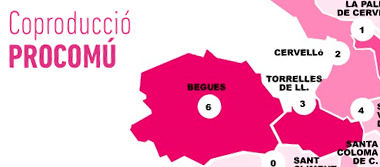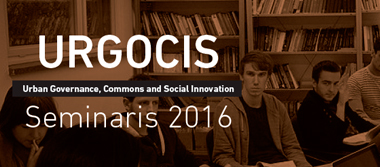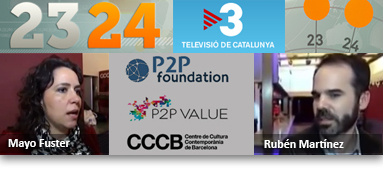Increased proliferation of commons initiatives in the Metropolitan Area of Barcelona with an unequal distribution across neighbourhoods and economic sectors
There is an increased proliferation of commons initiatives across the Metropolitan Area of Barcelona (AMB for their Catalan abbreviation) with an unequal distribution across neighbourhoods and economic sectors. This is a clear finding from the study developed by researchers from the Institute of Government and Public Policy (IGOP) and the Institute of Environmental Science and Technology (ICTA-UAB), both from the Universitat Autònoma de Barcelona, which analyses the territorial distribution of common initiatives in the AMB.
Bounding the urban commons in the AMB
The financial crisis of 2008, the austerity policies that followed it and the urban uprisings around the planet during 2011 (Arab Spring, 15M, Occupy Wall Street, etc.) revealed the inability of governments to meet the growing social needs of the population and, at the same time, gave rise to the emergence of new citizens-led responses that offered solutions outside the state and the market. This study analyses the concentration and territorial articulation of citizens-led pro-commons initiatives in the Metropolitan Area and their implications in terms of territorial development and socio-environmental justice.
Uneven distribution of urban commons across space and sectors
The results of the study show that initiatives characterised by active citizen involvement in production, consumption and decision-making (commons) represent 51% of all the 1,160 citizen initiatives mapped within the AMB. The study outlines commons as encompassing a prosumer dimension, i.e. the good or service is produced by the users themselves, at least in some phase of the productive process, which includes its governance. Spatially, 40% of commons initiatives are concentrated in the city of Barcelona, although important clusters were also found in the municipalities of L’Hospitalet de Llobregat, Sant Cugat del Vallès, Cerdanyola del Vallès, el Prat de Llobregat, Badalona and Santa Coloma de Gramenet. “This unequal concentration shall be taken into account when designing territorial policies”, explain the IGOP-ICTA team. If we take into account their sector, 50% of the common initiatives are in the “agroecology, energy and environment” and “culture and leisure” sectors; as opposed to “technology and logistics” (4%) and “housing” (6%) sectors, where they are less dominant. Approximately one third of this activity is carried out in collaboration with the government, which is mainly local.
Urban commons have a positive impact but there is still a way to go
According to the IGOP-ICTA team, most commons initiatives contribute to the promotion of social and environmentally transformative local development, towards greater redistribution, wellbeing and the integration of vulnerable groups. Successful experiences of collaboration and co-production with the public administration are also highlighted, especially in neighbourhoods and municipalities with longer histories of citizens-led organising.
Still, there is an overarching need of a change in the way public authorities relate to the territory. This change can be synthesized in three points. First, formulating policies requires new public management expertise that can make the best of citizen self-organization and collective uses. Secondly, it is important to distinguish overlaps and differences between the social and solidarity economy sector as a whole, and commons initiatives. Finally, there is the need to promote an administrative culture (e.g., among public policy makers and street-level managers) whereby governmental support to citizens’ projects does not mean the subordination, control or appropriation of these by the government. In this vein, an important change would be the simplification of administrative procedures and the promotion of ad hoc measures to guarantee, or at least not hinder, commons activities (for example, in the case of child care groups, the required licenses makes the collective organization of participants more difficult).
That said, the purpose of policies shall be different depending on whether there is social and critical mass or not. In the first case, the role shall be of accompaniment and facilitation. In the second, it may be worthier to explore alternative actions such as training, dissemination of knowledge or generation of opportunities to share ideas and experiences. These actions shall create momentum around citizen participation and in turn contribute to the better implementation and effectiveness of future territorial policies. The way in which policies are implemented is also important, and the creation of municipal and supra-municipal spaces that work independently of the political context and give continuity and contribute to the implementation of the policies. In this line, it is important to have street level agents in the territory that work directly with the commons initiatives and entities, and thus understand their unique needs and potential for public management.
For further information, check the website of the project: http://blogs.uab.cat/coproduccioprocomu/















